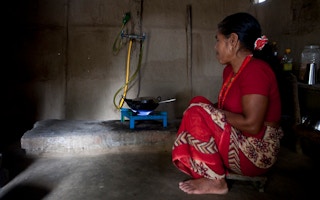The more renewables a country deploys, the more efficient its energy use, according to a study of the eight countries that consume half of the world’s electricity.
The researchers estimate that by combining investments in renewables and in energy efficiency, the world’s total energy demand can be reduced by 25 per cent by 2030.
In practical terms, it cannot happen all at once, but the adoption of modern technology such as efficient cooking stoves instead of open fires in India, and the use by all countries of renewable energy to power energy-efficient lightbulbs, refrigerators and factories, would prevent the world from dangerously overheating.
According to the International Renewable Energy Agency and the Copenhagen Centre on Energy Efficiency, which combined to produce the study, this is the first time that anyone has tried to link the benefits of investing in renewable energy and energy efficiency.
Emissions reductions
Although widely different in their economies and state of development, all the countries studied – China, Denmark, France, Germany, India, Italy, the UK and the US – would make substantial reductions in emissions by 2030 as fossil fuel use would drop dramatically.
The aim of the study was to work out how best to achieve the United Nations Sustainable Energy for All initiative, which seeks to achieve three linked global objectives: ensuring universal access to electricity; doubling the rate of improvement of energy efficiency; doubling the share of renewables in global energy supply by 2030.
The report points out that familiar appliances such as gas condensing boilers are far more efficient than traditional boilers, and a solar water heater is 100 per cent efficient, compared with a coal-fired boiler at 85 per cent.
Transport using electric bicycles or cars also uses far less fossil fuel − and none if the electricity comes from renewable sources. It is also a way of storing surplus electricity in batteries.
“
Increasing renewables from 18 per cent in 2010 to 36 per cent by 2030 will create jobs, reduce pollution, and provide half of the emission cuts needed to avoid the worst effects of climate change. Following such a path is not only technically feasible, but more affordable than current energy policies.
On the industrial level, one of the ways cited to save huge quantities of energy is using scrap steel to make new steel, rather than beginning with iron ore.
Using heat pumps provides efficiency gains of 80% for the same power input, and if these are driven by renewable sources there are no carbon emissions.
The report makes a distinction between what it calls new renewables – wind, solar, geothermal, hydro – and traditional biomass (open fires for cooking or heating), which can be very inefficient. However, if biomass is burnt in new, efficient cooking stoves it dramatically reduces fuel use and increases heat output. The efficiency gain is up to 80 per cent.
Worst effects
The study says: “Increasing renewables from 18 per cent in 2010 to 36 per cent by 2030 will create jobs, reduce pollution, and provide half of the emission cuts needed to avoid the worst effects of climate change. Following such a path is not only technically feasible, but more affordable than current energy policies.”
One of the other issues covered is “energy intensity” − the amount of energy used for each unit of gross domestic product. In the past, the use of fossil fuels increased in direct ratio to the amount of production, but this link has now been broken.
A key target of China and other major economies has been to reduce their energy intensity in order to cut carbon emissions and fuel imports.
This latest study says the combination of renewables and energy efficiency that it envisages would reduce energy intensity by 5 per cent-10 per cent by 2030 above improvements that are already being made.

















